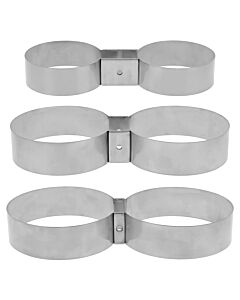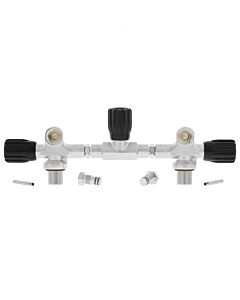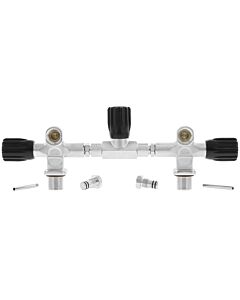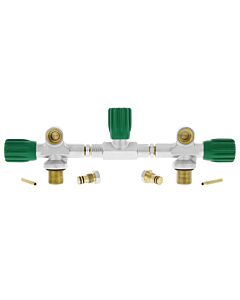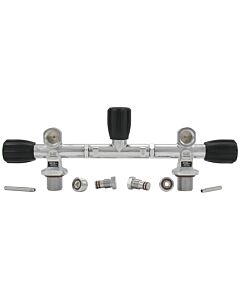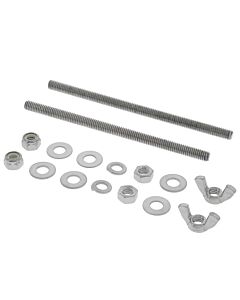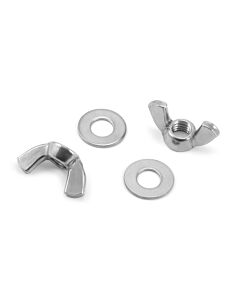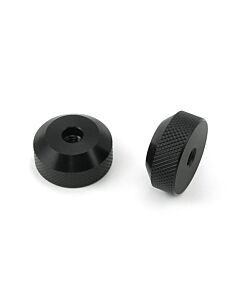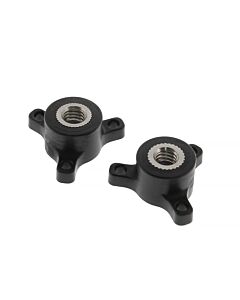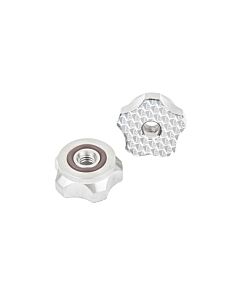Bands & Manifolds
Nitrox? Heliox? Helitrox? Triox? Normoxic Trimix? Hypoxic Trimix? Heliair?
Nitrox is a term introduced by Morgan Wells at NOAA to describe mixtures of Nitrogen and Oxygen, usually meaning air that has been enriched with added Oxygen. Although Nitrox may be considered any combination of the two gases, in practice Nitrox is always hyperoxic, meaning it has more oxygen than Air. Common mixtures of Nitrox contain 32% or 36% oxygen. You won't find Nitrox in Webster's Dictionary, but thanks to Dr. Wells many experienced sport divers today are properly trained to use Nitrox to extend their bottom times or decrease the risk of decompression illness.
Heliox is a term that describes a breathing gas mixture containing only Oxygen and Helium. Heliox is primarily used in commercial saturation diving systems. Replacing all the Nitrogen with Helium also eliminates the incapacitating levels of narcosis that would be caused by Nitrogen in very deep diving. The Helium reduces the gas density which makes it noticeably easier to breathe, and Heliox is also more decompression friendly in saturation diving. In rebreathers, high percentages of helium also improve efficiency of the CO2 scrubber.
Trimix is a technical SCUBA diving term that describes a breathing gas that consists of any mixture of Oxygen, Helium, and Nitrogen gases. Helium is very expensive, so using it to just dilute the Nitrogen (rather then eliminate it entirely) is a cost effective way to reduce the narcosis to manageable levels. For deep diving, the Helium also serves the dual purpose of diluting the Oxygen which reduces the risk of oxygen toxicity. There are some subtle physiological issues associated with using Heliox on extremely deep dives and some experts believe the Nitrogen in Trimix serves to help attenuate or 'buffer' those effects.
Normoxic Trimix has the same percentage of oxygen as normal oxygen levels in Air. (Although most of us assume Air is 21% oxygen, the Compressed Gas Association says Air can contain from 19% to 23.5% oxygen.) A very common Normoxic Trimix mixture is 21% Oxygen and 35% Helium. However, a normoxic level of oxygen limits dive depths because it becomes very quickly toxic below { 200 ft | 61 m }. Deeper diving requires Trimix that contains oxygen levels too low to sustain life at the surface, a condition known a hypoxia.
Hypoxic Trimix, with oxygen levels of 18% or less, is considerably more dangerous than normoxic mixtures. Not only because of the greatly increased depths associated with use of hypoxic breathing gas mixtures, but because the risk of breathing the wrong mixture is greatly increased as well. A common Hypoxic Trimix mixture is 10% oxygen and 50% Helium, sometimes called Heliair because it's a mixture of half Air and half Helium. In addition to being deadly at the surface, Hypoxic Trimix is not a decompression friendly gas for SCUBA diving. Hypoxic Trimix diving thus typically involves carrying several other breathing gases such as an intermediate travel mix and multiple decompression mixes that have specific depth ranges for use. Managing the multiple cylinders and switching to the proper breathing gas at proper time and depth requires extensive training and meticulous procedures in order to be done safely.
Triox is a term used to denote hyperoxic mixtures of Trimix. Like Nitrox the elevated levels of oxygen (and decreased inert gas) in Triox improve the decompression characteristics, but limits the maximum depth. Divers are beginning to realize there are benefits to using Trimix in the shallower sport diving depths. Training agencies have introduced 'recreational trimix diving' courses that teach the use of hyperoxic Trimix. NAUI has adopted Helitrox as its name for hyperoxic Trimix and particularly a mixture of 26% Oxygen and 17% Helium.
By the way... there is a very widely available breathing gas that could be called Normoxic Nitrox but most people know by the much more common name... Air.
